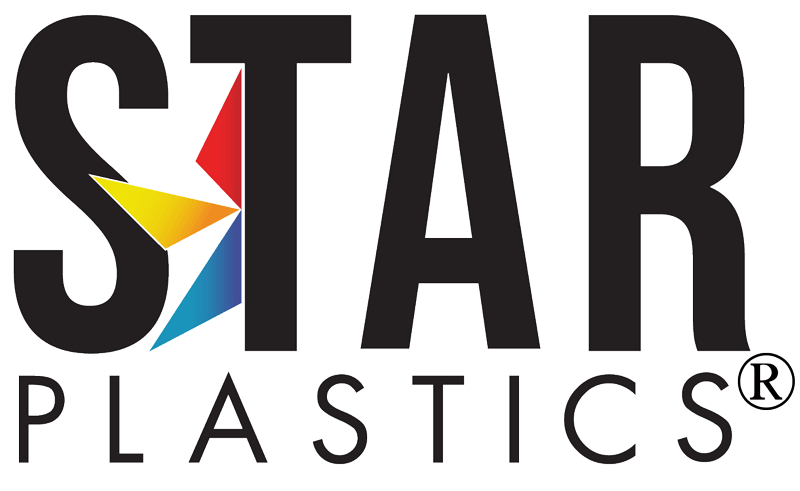News
Star Guide: Amorphous vs Semi-Crystalline Polymers
Know Your Polymer Options
Whether it is simply choosing a restaurant to go to or selecting the most suitable resin material for a manufacturing application, having options is critical. In the current market, plastic resins, especially high-volume resins, have seen a rollercoaster of prices caused by significant shortages. Having material selection options today means finding a replacement material faster to help produce your application on time.
At Star Plastics, we work hard to serve as a dependable resource, providing custom polymer compounding services and helping you to navigate through the challenges of custom compounding.
To help, we are breaking down the difference between the two main types of high-temperature polymer materials – amorphous and semi-crystalline.
What are Amorphous Polymers?
Amorphous polymers are a type of polymer that has a seemingly random and coiled molecular structure and does not immediately melt when heated. Without a sharp melt point, these materials gradually soften. Depending on their specific molecular composition, they will experience a change, becoming either more glassy and less rubber-like or more rubber-like and less glassy.
Amorphous polymers are easier to process. Additionally, amorphous polymers offer better dimensional stability and are isotropic in flow, melting more evenly to provide less shrinkage.
Common types of amorphous polymers include:
- PC
- PC/ABS
- ABS
- PMMA
- Sulfone Polymers
- COC
What are Semi-Crystalline Polymers?
Semi-crystalline polymers are a type of compound with a highly ordered molecular structure. With a sharp melting point, semi-crystalline polymers remain solid until it absorbs a specific amount of heat. Then the polymer experiences a change becoming a low viscosity liquid. The tightly packed molecular chains create a much more defined melting point, whereas amorphous polymers have more variance.
Semi-crystalline polymers are anisotropic in flow, the opposite of amorphous, meaning they will experience non-uniform shrinkage. These polymers will shrink less in the direction of the flow compared to the direction traverse.
Common types of semi-crystalline polymers include:
- PA’s
- PBT
- POM
- PP
- POK
What is the difference between Amorphous and Semi-Crystalline polymers?
The most considerable difference between amorphous and semi-crystalline polymers is in the molecular structure. As mentioned, amorphous polymers are random, entangled chains, while semi-crystalline polymers are structured.
The difference in molecular structure provides unique advantages for both. For example, amorphous polymers are transparent, experience no-to-low amounts of shrinkage, and offer superior low-temperature performance, high impact and bond well to substrates.
On the opposite side, semi-crystalline polymers showcase improved chemical and heat resistance, plus they provide superior performance against wear.
When are Amorphous and Semi-Crystalline polymers used?
When selecting which type of polymer, it is critical to understand the application requirements and consider the environmental or chemical exposures that the part will experience.
For applications that require high dimensional accuracy and stability, with a transparent and overall good appearance, amorphous polymers would be the best selection given it is in an environment with low-to-zero mechanical abuse or chemical contact.
If the application is in an environment that experiences any repeated cyclic loading, chemical contact or high levels of mechanical abuse, then semi-crystalline polymers will provide better performance.
When selecting the correct polymer, there are several other considerations, including:
- Life expectancy
- Working temperature
- Environment
- Recyclability
The Star Plastics Advantage
As your guide to custom compounds, Star Plastics continues to find new ways to expand our product line.
Recently, Star Plastics partnered with LATI, a European manufacturer of engineering thermoplastics, to expand nylon and specialty material accessibility in North America, Europe, and Asia, allowing both companies to expand their reach into innovative applications within existing markets.
Utilizing LATI’s semi-crystalline polymer expertise and product lines, Star Plastics has developed an unmatched portfolio of custom compounds, presenting a deep offering of amorphous and semi-crystalline polymers. The global partnership between LATI and Star allows Star Plastics to offer LATI specialty plastic compounds that come with the same quality and service that customers have grown to expect, creating exciting opportunities for continued growth for each company and their customers.
Ready to broaden your product portfolio? Contact Star Plastics today to learn more about our ability to expand your market reach.



